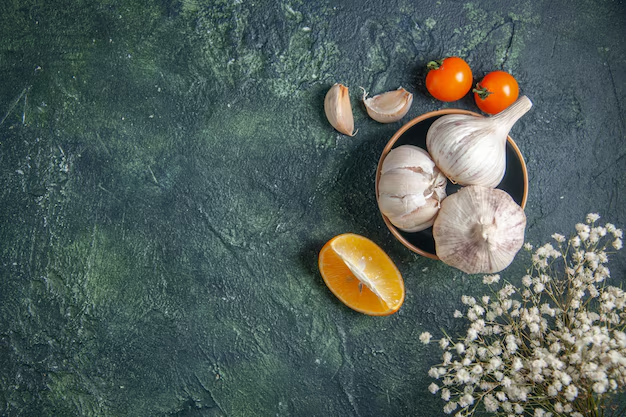Should You Keep Garlic in the Refrigerator? A Comprehensive Guide to Garlic Storage
Garlic is a culinary powerhouse, treasured for its unique flavor and numerous health benefits. However, the way you store garlic can significantly impact its shelf life and flavor. One common question arises in kitchens worldwide: Should you store garlic in the refrigerator? Let's unravel the mystery of garlic storage and explore the best practices to keep your garlic fresh and flavorful.
The Nature of Garlic: Understanding Its Shelf Life
To make an informed decision on garlic storage, it’s essential to understand the nature of garlic itself. Garlic bulbs possess a robust outer skin that acts as a natural protector, keeping the cloves inside fresh for several weeks, even months. Here's what you need to know:
- Whole Bulb: When garlic remains as a whole bulb with its papery outer skin intact, it's best stored in a cool, dry place, away from direct sunlight.
- Individual Cloves: Once broken from the bulb, individual garlic cloves begin to lose their longevity, necessitating different storage considerations.
- Peeled or Chopped Garlic: Peeled or chopped garlic is more exposed to air, requiring immediate use or appropriate storage methods to maintain freshness.
The Refrigerator Debate: To Chill or Not to Chill?
Storing garlic in the refrigerator seems straightforward, yet it involves complexities that could affect your garlic’s flavor and texture. Here are some critical insights into refrigerating garlic:
Pros of Refrigerating Garlic
- Preservation: Refrigerating can extend the lifespan of peeled or chopped garlic and slow down the sprouting process for bulbs.
- Convenience: Having pre-prepared garlic on hand means quick access for cooking, especially for those who prefer not to peel and chop daily.
Cons of Refrigerating Garlic
- Sprouting: Garlic stored in cold conditions can sprout, leading to an altered flavor profile that might be less desirable in cooking.
- Texture Changes: The higher moisture levels in refrigerators can cause the garlic cloves to become mushy, altering their texture and reducing their crispness.
When to Refrigerate Garlic
- Peeled/Chopped Garlic: For peeled or chopped garlic, refrigeration is advisable. Store it in an airtight container to minimize exposure to moisture and odors.
- Garlic Paste: Refrigeration is necessary for homemade garlic pastes, often mixed with oil or salt to maintain freshness.
Alternative Storage Options for Garlic
If refrigeration isn't ideal for your garlic needs, consider these alternative storage methods that can ensure freshness and optimal flavor:
Traditional Pantry
Garlic is traditionally stored at room temperature, and when stored properly, it can thrive in a pantry setting:
- Ventilated Storage: Use a mesh bag, garlic keeper, or even a paper bag to allow airflow while protecting garlic from light and moisture buildup.
- Cool and Dry Locations: Choose a spot in the kitchen or pantry away from heat and humidity, ideally with temperatures ranging between 60-65°F (approx. 15-18°C).
Freezing Garlic
Freezing is a viable option for those wanting to extend garlic’s life without worrying about refrigeration drawbacks:
- Whole Bulbs: Wrap whole bulbs in foil or freezer bags for longer storage.
- Chopped Garlic: Freeze chopped garlic in ice cube trays with a little oil to prevent clumping, and then transfer to freezer-safe containers.
Infusing Garlic in Oil
Infusing garlic in oil is an option for flavor enthusiasts; however, it requires careful handling to prevent spoilage:
- Refrigerate Immediately: Garlic in oil mixtures must be refrigerated and consumed within a week to prevent the risk of botulism.
- Freezing Method: For extended use, freeze garlic in oil in small portions to safely store for a longer period.
Garlic Sprouting: What It Means and How to Handle It
One common occurrence when storing garlic is sprouting, especially if kept in less-than-ideal conditions. Here’s a deeper dive into garlic sprouting:
Understanding Sprouting
- What It Is: Garlic sprouts are green shoots that emerge from the center of the clove, signaling early growth usually triggered by cold storage.
- Impact on Flavor: Sprouts can impart a bitter taste, which some find unpleasant in various dishes.
Managing Sprouts
- Removal Process: To handle sprouted garlic, simply remove the green sprout before using it in recipes to preserve the desired flavor.
- Discerning Usage: While sprouted garlic isn’t harmful, it may be best used in cooked dishes where any bitterness can be masked.
Importance of Proper Garlic Storage Techniques
Proper storage is key not only for preserving garlic’s flavor and texture but also for maintaining its beneficial properties. Consider the following factors in your storage practices:
Flavor Preservation
- Avoiding Extremes: Keep garlic away from excessive moisture and extreme temperatures to prevent spoilage.
- Maintaining Freshness: Stored in optimal conditions, garlic can sustain its distinctive aroma, enhancing a variety of dishes.
Health Benefits
- Nutrient Retention: Proper storage helps maintain garlic's nutrient profile, rich in sulfuric compounds said to contribute to its antimicrobial characteristics.
📝 Key Takeaways for Garlic Storage
- Whole Garlic Bulbs: Store in a cool, dry place with good air circulation; avoid refrigeration.
- Peeled or Chopped Garlic: Refrigerate in an airtight container to extend freshness but use promptly.
- Freezing Method: Consider freezing garlic in usable portions to maintain its texture and flavor without refrigerator drawbacks.
- Sprouting Awareness: Regularly check stored garlic to manage and remove sprouts if they occur.
Conclusion: Tailoring Garlic Storage to Your Lifestyle
Deciding whether to store garlic in the refrigerator ultimately depends on your usage habits and preferred culinary practices. By understanding how different storage methods impact garlic, you can make informed decisions that enhance your cooking experience while maintaining garlic’s integrity. Explore these options and find the combination that best suits your kitchen and lifestyle needs. Whether chosen for the convenience of refrigerated storage or the traditional approach of pantry storage, your garlic should remain a potent, delicious staple in your culinary arsenal.
